Earlier this year, I wrote about a rare occurrence at Dobova, a border station between Slovenia and Croatia: a few HŽPP local trains crossed over from Croatia into Slovenia to pick up passengers going to Zagreb holiday markets. This summer there have been some additional positive developments at this station. In addition to regular long distance trains, SŽ (Slovenian railways) started running seasonal (EDIT: these trains are year long) weekend trains between Zagreb and Pula via Ljubljana, and these trains run through Dobova. But then came the big surprise – on August 8th, SŽ announced two pairs of trains that will run between Ljubljana and Zagreb, starting on September 1st! Considering these developments, I decided to research the recent history of cross border travel at this station to better understand where we are now in 2025. Note that this post will only cover relatively recent history. For a more thorough background on this old train line read my previous post.
Dobova in 1990/1991

To better understand what’s possible at Dobova, I began my research by referencing the Yugoslav railways 1990/1991 timetable (June 1990 – June 1991), the last timetable designed before the dissolution of the Yugoslav federation.
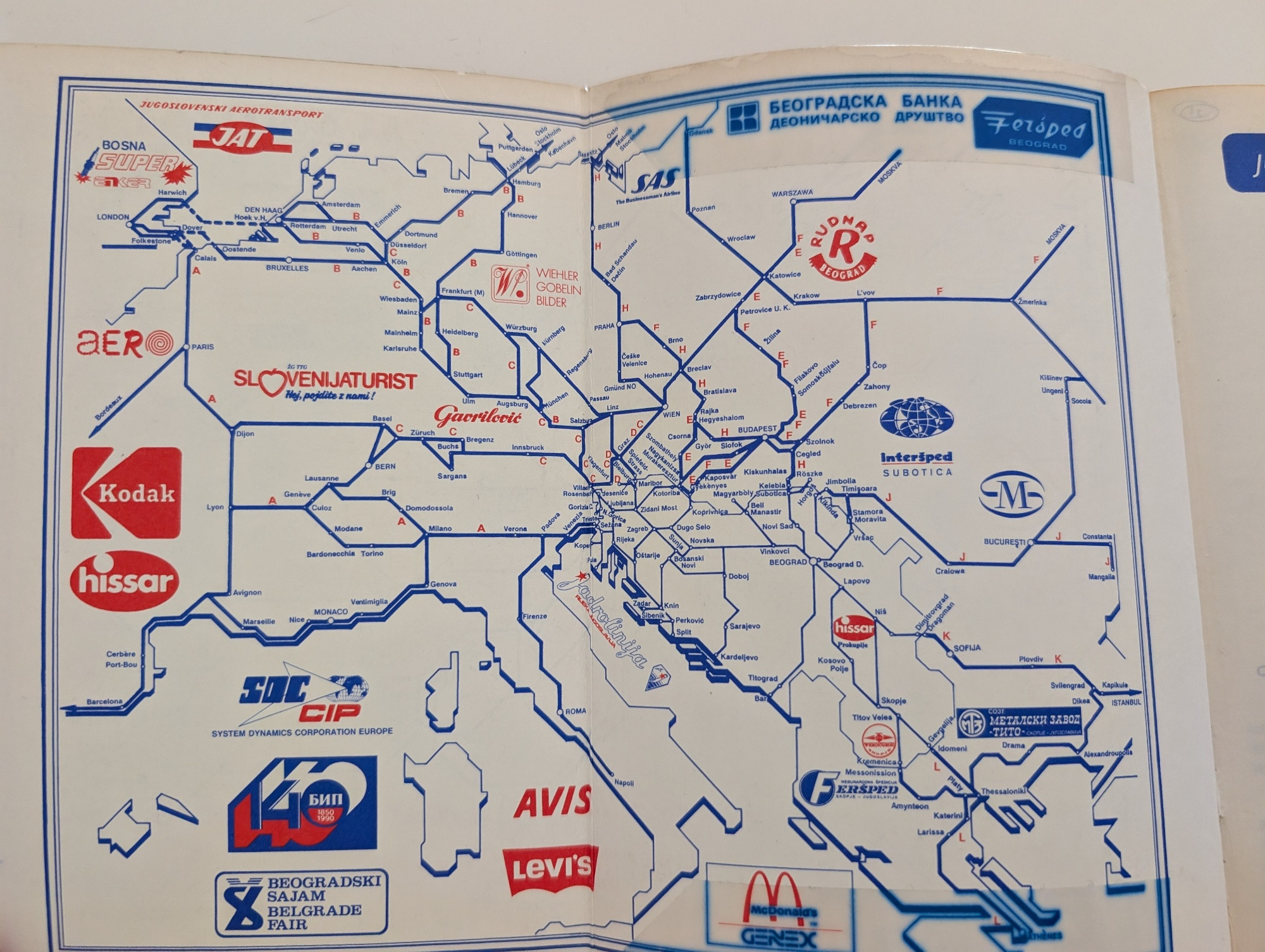
Reading this timetable, like referencing any late Yugoslav document, is a strange experience. On the one hand, you are seeing the final achievements of a state and a society that no longer exist. While the 1980s are generally considered a period of Yugoslav economic decline and the turning point in that state’s violent dissolution, this period was also Yugoslavia’s peak in many ways. It would take decades, for example, for the post Yugoslav states to catch up with air passenger numbers and airline connections Yugoslavia had in 1990. Similarly, the 1990/1991 timetable shows a country with flourishing domestic rail and a gigantic amount of cross continental international trains. Context, however, is important. In 1990 rail is a preferred mode of transport in many parts of Yugoslavia, and for many it is the only mode of transport they can afford. Car ownership is still relatively low, and motorways between cities are few. Only a few hundred kilometers of limited access highways exist in the whole federation, compared to over 2000km nowadays in Slovenia and Croatia alone.
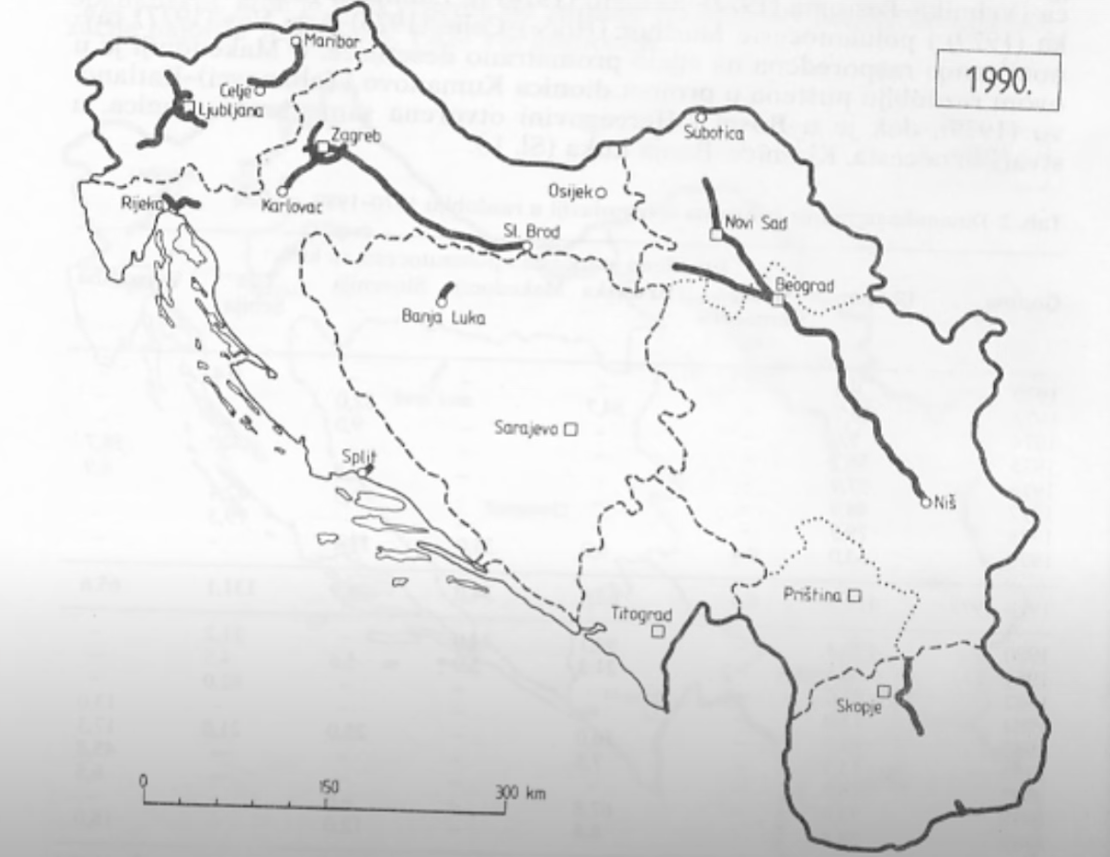
Similarly, the extreme distance of international trains like Paris to Belgrade is an artifact of the pre-high speed rail, pre-cheap flights Europe. While the map of Yugoslavia’s international connections looks nostalgically impressive, most of these trains would be gone in 2025 even had the Yugoslav federation not disintegrated violently. Nevertheless, it’s hard to ignore the contrast. In 2025, some post-Yugoslav states barely have any rail running, while only Slovenia and Croatia have international rail connections at all (to be precise, only Slovenia and Croatia have rail connections to countries outside the post-Yugoslav space. BiH has a seasonal passenger train to the Croatian town of Ploče, while Serbia connects with Podgorica and Bar in Montenegro EDIT: you can also take a local train from Subotica in Serbia to Szeged in Hungary). Lastly, while I’ve only referenced this timetable to understand rail operations at Dobova in the pre-disintegration period, it’s important to consider that by October 1990 there were already violent incidents occurring on railroads passing through the areas of the SAO Krajina (a self-proclaimed Serbian autonomous region within Croatia). While Dobova wasn’t directly affected by the conflict until late June 1991 (Ten-Day War), rail operations were certainly disrupted elsewhere by that point.

With those considerations, let’s take a closer look at Dobova station. Dobova is the connection between the Croatian main line to Zagreb, and the Slovenian main line to Ljubljana. In addition to being a border station, Dobova is the transfer station between 3kV DC power, used in Slovenia, and 25kV AC power, used in Croatia. That means that electric trains either have to change locomotives, or they need to support multi system power. Alternatively, diesel trains can run on this line too. In 1990/1991 timetable, rail services here were still run by the Yugoslav Railways, but they were operated by separate branches that had a high degree of autonomy – ŽTP Ljubljana (future SŽ) and ŽTP Zagreb (future HŽPP). Yugoslav Railways did not have any multi system locomotives or EMUs (electric multiple units), so trains either had to change locomotives, or run on diesel. There was no border control at this station until summer 1991 at the earliest (read this thread for some details about the establishment of border control between Slovenia and Croatia in 1991). To better understand different services, we’ll reference the mid day timetable schedule for trains going from Zagreb to Ljubljana. We’ll look at 3 types of passenger service that ran through Dobova: Yugoslav express trains, long distance trains (both Yugoslav and international) and Yugoslav local trains (both ŽTP Ljubljana and ŽTP Zagreb).
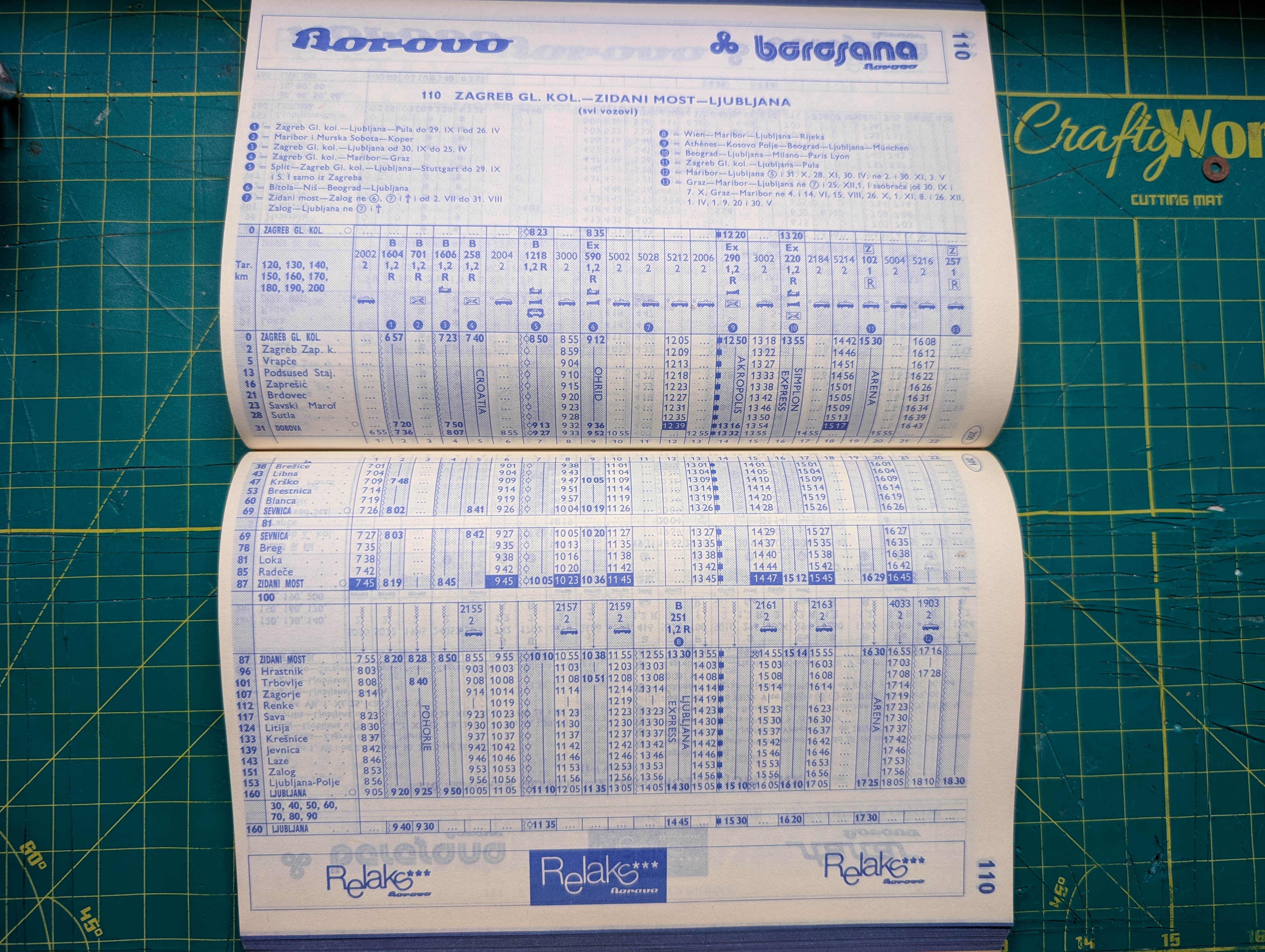
We’ll start with express services. The Arena Express ran between Zagreb and Pula via Ljubljana and made the Ljubljana – Zagreb trip in exactly 120 minutes with JŽ 711 series DMUs (diesel multiple units), only stopping in Zidani Most. By running diesel multiple units, JŽ managed to cut time down to two hours, skipping the locomotive change or transfer to another train. In the timetable above, the Arena leaves Zagreb Glavni kolodvor at 3:30pm as train 102. It passes Dobova without stopping, reaching Zidani Most at 4:30pm. It then speeds towards Ljubljana, reaching it by 5:30pm. Emona Express (Ljubljana – Zagreb – Belgrade) was another express service that used JŽ 711 DMUs going through Dobova, but that train was not running in the 1990/1991 timetable. In 2025 SŽ runs a train resembling the Arena Express, running summer (EDIT: these trains are year long) weekend service between Zagreb, Ljubljana and Pula. The train runs with SŽ Stadler FLIRT DMUs and makes the trip in 2:23h with 4 intermediate stops. This service runs with a DMU despite the availability of multi system EMU trains, because the Istrian route to Pula isn’t electrified. We’ll cover this new Arena service further down.
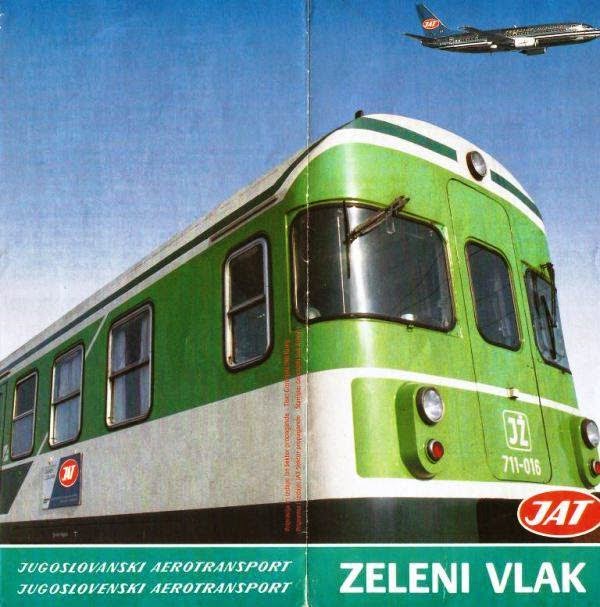
While the Arena made the trip in only 2 hours, long distance trains also ran close to that time. The Akropolis (Athens – Belgrade – Munich), for example, would leave Zagreb at 12:50pm as train 290 and reach Ljubljana by 3:10pm, making the trip in 2:20 hours. Simplon Express (Belgrade – Milano – Paris) was even faster, leaving Zagreb at 1:55pm as train 220 and getting to Ljubljana by 4:10pm, only 15 minutes slower than the Arena Express. The extra time couldn’t be cut down for the long distance trains, since they required locomotive change due to different power to the east and west of Dobova. Today the average time for the long distance through running trains is still about 2:20. These trains still change locomotives at Dobova even though multi system locomotives are available now.
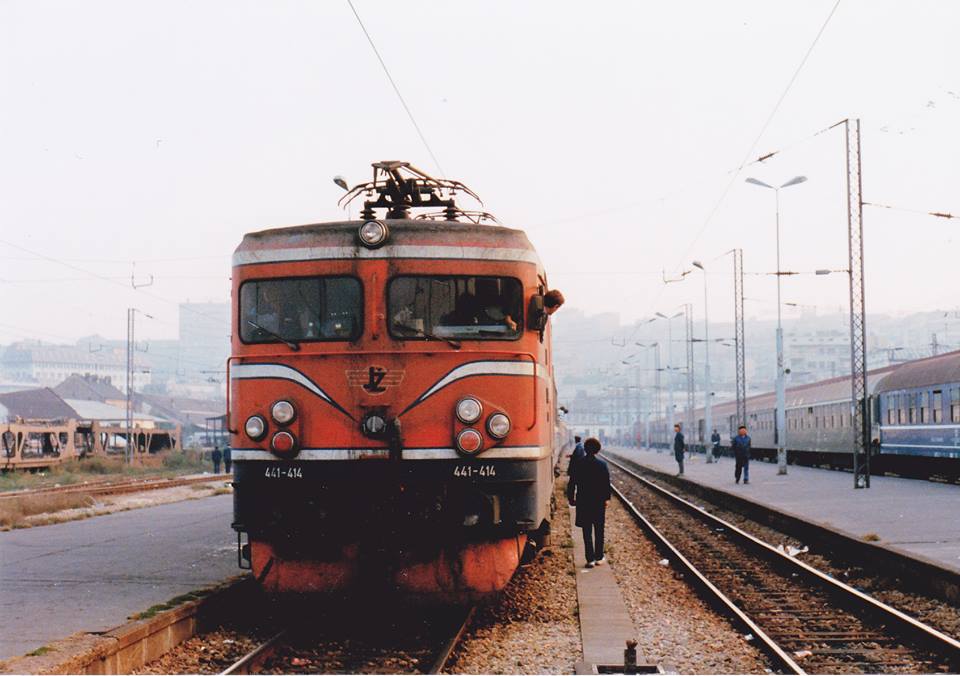
Lastly, let’s look at local EMU services to Dobova in the 1990/1991 timetable. 6 pairs of 25kV AC EMUs from Zagreb terminated at this station, compared to 11 (!) 3kV DC EMU from either Ljubljana or Zidani Most. The timetable was built to provide easy transfer between the two sides. ŽTP Zagreb ran JŽ 411 EMUs to Dobova. These can still be seen sometimes as HŽ series 6111. These ŽTP Zagreb EMUs would meet ŽTP Ljubljana’s EMUs from Ljubljana, likely JŽ 311/315 series. These ran as SŽ 311/315 until 2021, and HŽ 6011 until 2011. Let’s look at a possible connection between the two in the 1990/1991 timetable. Train 2158 would leave Ljubljana at 10:40pm, running local service and making lots of intermediate stops, getting to Dobova at 12:47. Train 5213 from ŽTP Zagreb would wait at Dobova and leave at 12:52pm towards Zagreb, getting to Zagreb Glavni kolodvor by 1:30pm. A local passenger from Sevnica, for example, may need to go to Zagreb for a doctor’s appointment. They would board the ŽTP Ljubljana EMU at 12:16pm, transfer to a ŽTP Zagreb EMU 30 minutes later, and be in Zagreb by 1:30pm.
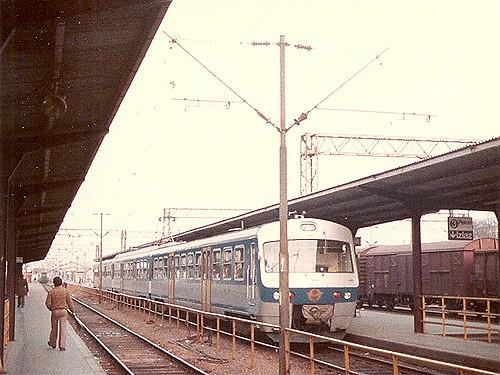
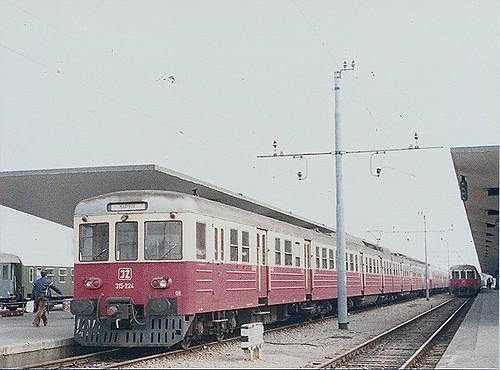
So this gives us an idea of “cross border” traffic through Dobova just before the dissolution of the Yugoslav federation. Long distance trains were plentiful, there were no border checks and locomotive swaps were fast. A few DMU express trains would pass through without stopping. Local services using different voltage EMUs met at the station many times every day.
Dobova as a border station (1991 – 2011)
Proper research is necessary to establish details about the dissolution of the Yugoslav railways and the transition of ŽTP Ljubljana and ŽTP Zagreb into Slovenske železnice and Hrvatske željeznice. Considering the impact of war, I do not have solid information on rail services at Dobova in the early 1990s. Per some anecdotal testimony, HŽ ran hourly EMU services to Dobova in the 1990s, even though it was already a border station in another country. Reportedly there was a disco club there that drew crowds from Zagreb every night. This certainly requires more research!
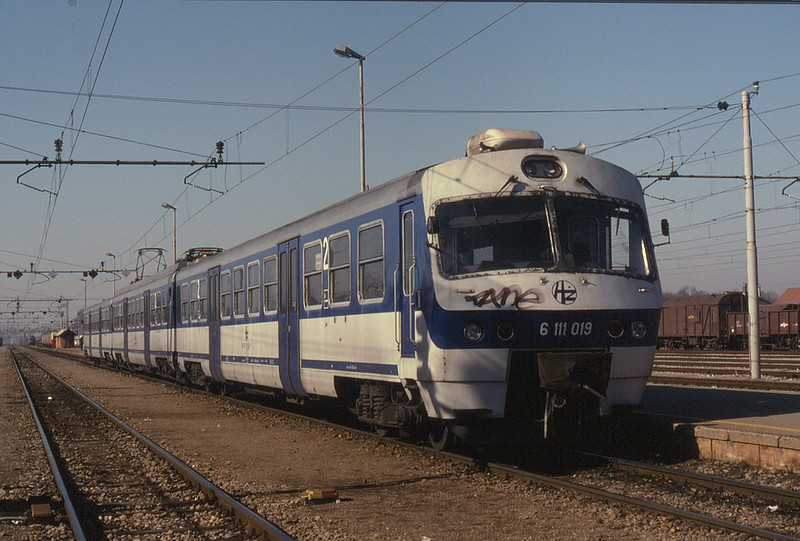
What we do know is that by the mid 2000s HŽ ran three daily pairs of EMUs to Dobova: trains 7800, 7801, 7802, 7803, 7804 i 7805. These ran until the end of the 2006/2007 timetable (December 2007), as you can see in this SŽ timetable:
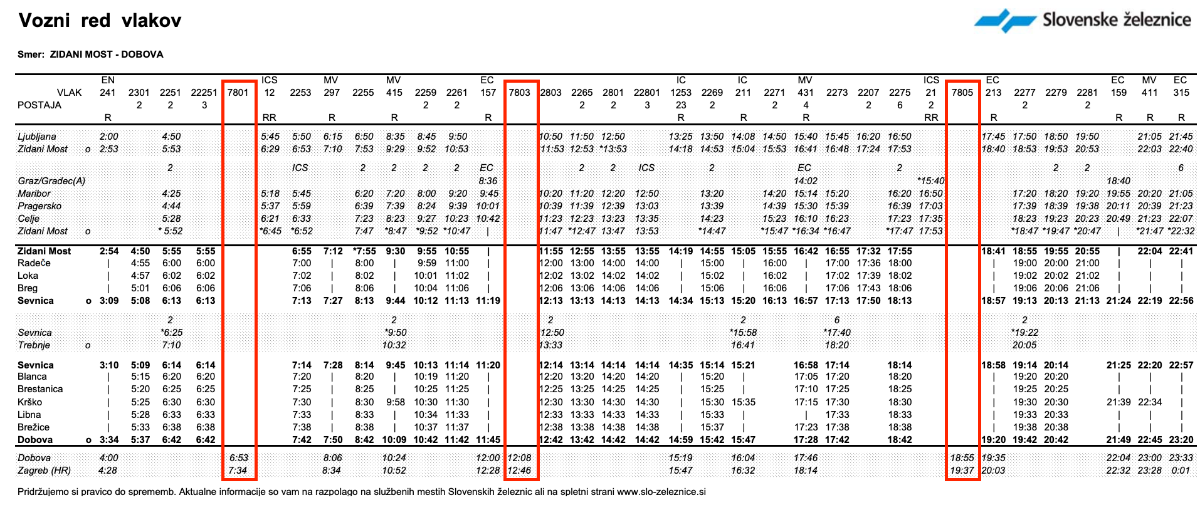
These 3 remaining pairs got cancelled between 2008 and 2011. I still need to find the exact timetables, but per internet discussions, service went down from 3 pairs daily to only one by the start of 2010, and they were all cancelled by the 2010/2011 timetable. In this HŽ 2010/2011 timetable proposal note it is stated that all Dobova cross border local trains (“pogranični”) are cancelled:

So why did these trains get cancelled? My first guess would have been Slovenia entering Schengen in December 2007. This was still 5 years before Croatia joined the EU in 2013. But that doesn’t really explain it, because service continued for a few years later. My second guess is that HŽPP just didn’t want to run those trains to a station that didn’t belong to them. By this point they ran all their EMU as part of their Zagreb suburban rail service (“gradsko-prigradski”). This is somewhat corroborated by HŽPP extending electric service to Harmica in 2008 and using it as the terminus for some “gradsko-prigradski” trains. Harmica is a stop on the single track, unelectrified Kumrovec line, which otherwise shut down in 2000.
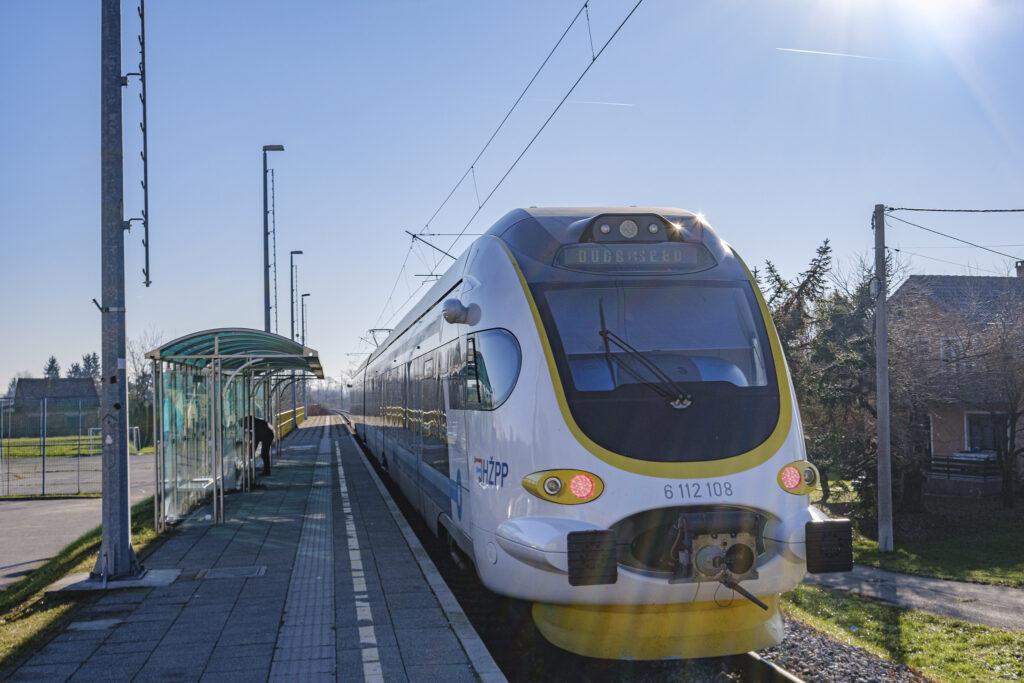
This also coincides with the Great Recession, which hit Croatia particularly hard and resulted in catastrophic cuts to railway level of service which are still felt to this day, combined with the major mode shift to cars starting in the late 1990s and 2000s, and the motorway construction boom. However, this is all circumstantial evidence. We just don’t know, other than the fact that since 2011 there has been no regular local cross border HŽPP service to Dobova.
Dobova station today
So here we are in 2025. What’s going on at Dobova? We already noted the special HŽPP holiday trains at Dobova in December 2024. While these trains were used for a few weekends last December, we don’t know whether HŽPP plans to bring them back this year or expand service and return to Dobova in the future.
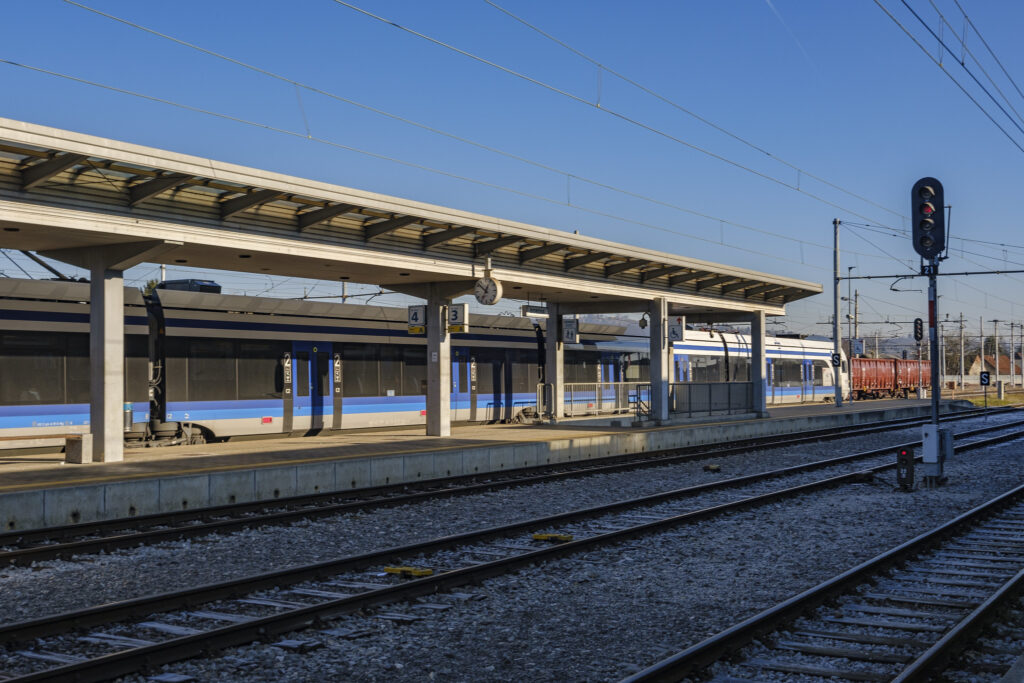
In the 2024/2025 timetable there are 3 pairs of long distance trains running through Dobova (technically there are more than 3 trains, but some split/meet at Dobova), plus some overnight summer services and another weekend Zagreb – Ljubljana service. These trains still change locomotives at Dobova despite availability of multi system ÖBB and SŽ EuroSprinters that can pull them under different voltage in Austria, Slovenia and Croatia. There’s no border control, but police are often present at this time of Schengen suspensions.
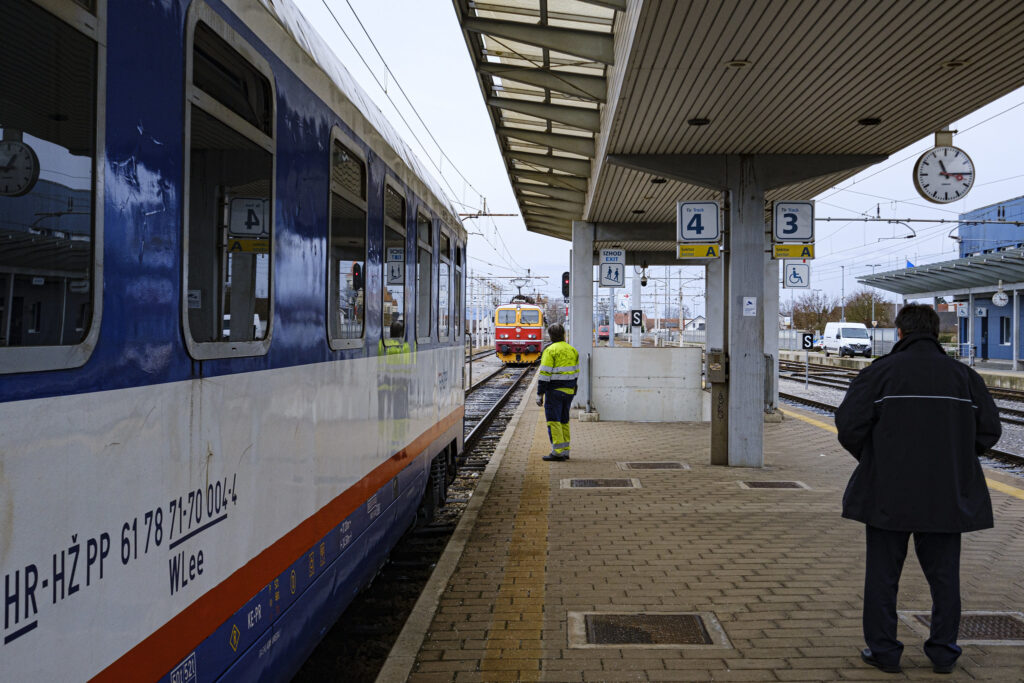
There’s also the aforementioned Zagreb – Ljubljana – Pula summer service by SŽ, using Stadler FLIRT DMUs. These trains essentially run the old Arena Express service, albeit only in the summer and only on the weekends. Unlike the Arena, they make a few more stops and dwell at Dobova for 10 minutes.
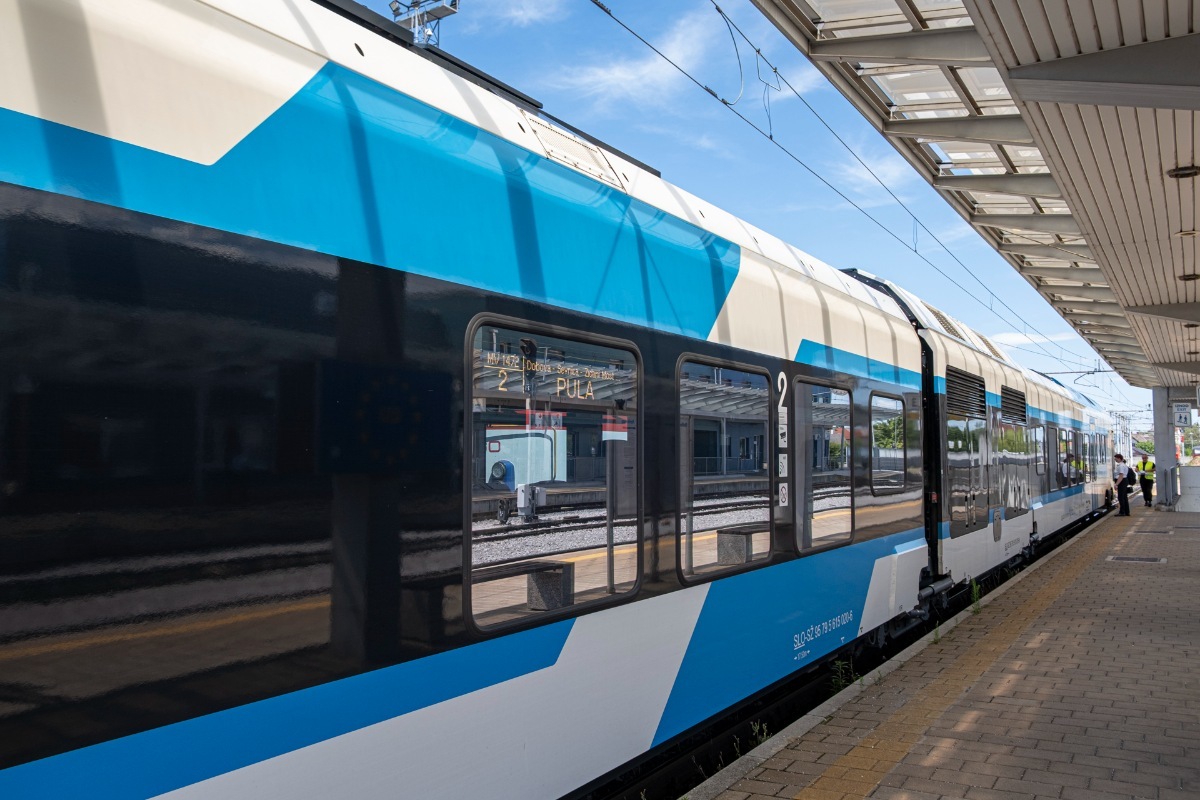
Finally, on September 1 2025 SŽ will start running daily EMU service from Ljubljana through Dobova and on to Zagreb. Since they will run these with multi system EMUs (SŽ 510 Stadler FLIRT), they will only stop at Dobova briefly (about 7 minutes, with one exception). While they will run as LPV trains in Slovenia (making all local stops), they will run to Zagreb Glavni kolodvor directly from Dobova, skipping local stops (CORRECTION: these trains are stopping in Zaprešić, making one extra stop in Croatia). These trains mostly have a competitive run time of about 2:30h (other than the earliest Ljubljana – Zagreb train LPV 2255 which will run 3 hours due to long dwell times at Zidani Most and Dobova).
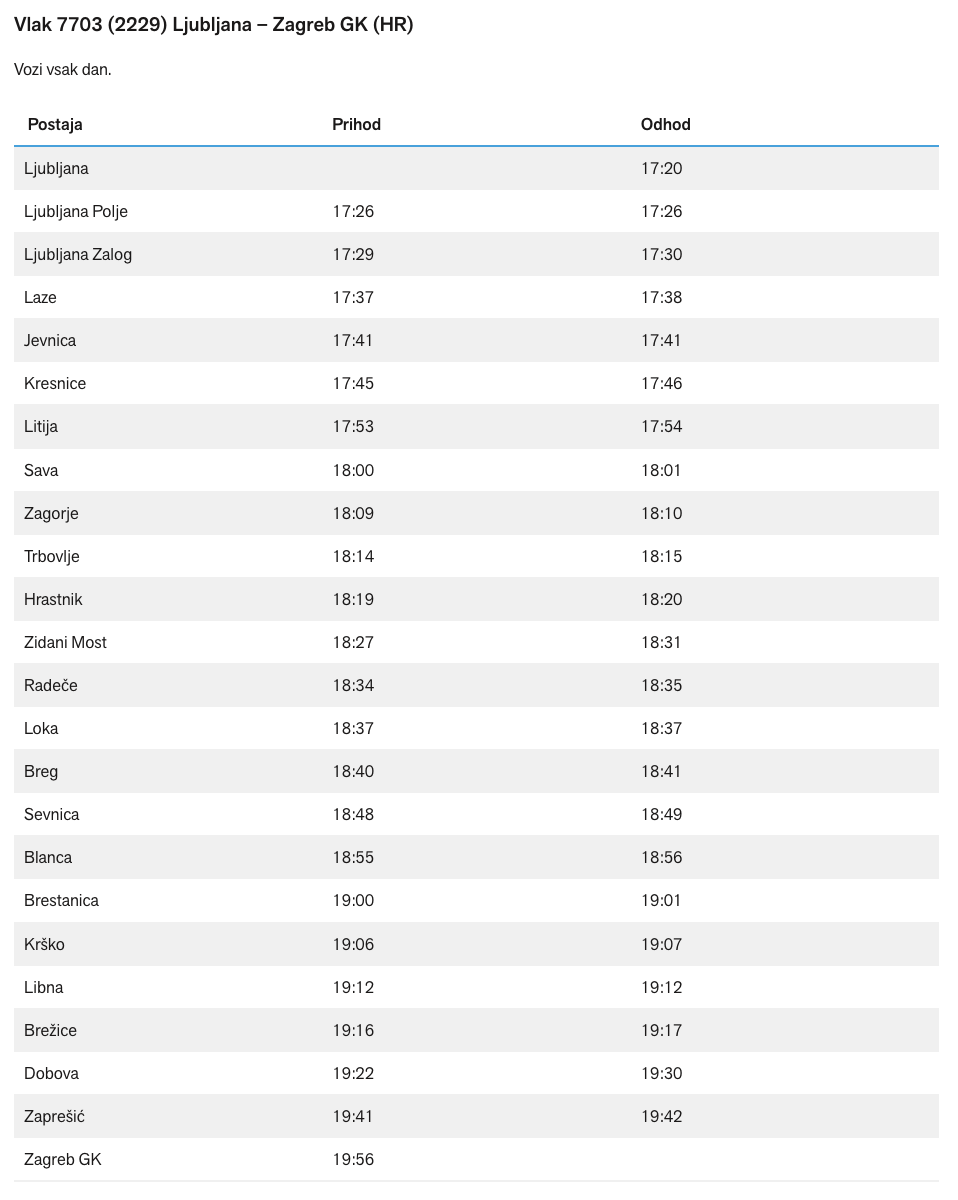
Interestingly, there are no legacy services that these trains are replicating. Since multi system EMUs weren’t available in the Yugoslav Railways times, through running EMU service was never possible at Dobova. Additionally, since these trains will run to Zagreb Glavni kolodvor directly (CORRECTION: with one stop at Zaprešić), they won’t be useful for local service in Croatian. In either case, this is a positive development even though it’s just a fraction of service available in 1990/1991. Arguably, it is comparable and potentially better than the mid 2000s when HŽPP EMUs ran to Dobova three times a day.
Nevertheless, for true restoration of solid cross border service, true express trains between Ljubljana and Zagreb need to come back. With multi system EMUs, a sub 2 hour service is possible. The question remains whether HŽPP will make any effort themselves? This short review of the 1990/1991 timetable points to obvious improvements we can easily make in 2025:
- run local EMUs to Dobova from both sides and sync timetables
- run true express service with multi system EMUs (current SŽ plan gets us half way there!)
- run long distance trains with multi system locomotives all the way to Zagreb to cut down on unnecessary locomotive change
Beyond this, improvements to online cross border ticket sales are a must for both SŽ and HŽPP. Currently, tickets either have to be bought in person at international ticket offices, or online from ÖBB (often more expensive!).
HŽPP and SŽ are two rail companies with very different priorities and capacities. HŽPP is only now stabilizing their domestic services with new rolling stock and slow repair of existing infrastructure, while SŽ is rapidly expanding cross border service with all neighboring countries. Cross border service is not a priority for HŽPP, and that makes some sense. However, the main line to Dobova is HŽPP’s most important railroad, carrying their most important international services. These necessary improvements should be possible without million euro investments. The economic, cultural and social potential is there, and hopefully the future success of the new SŽ cross border services will show that it can be done.